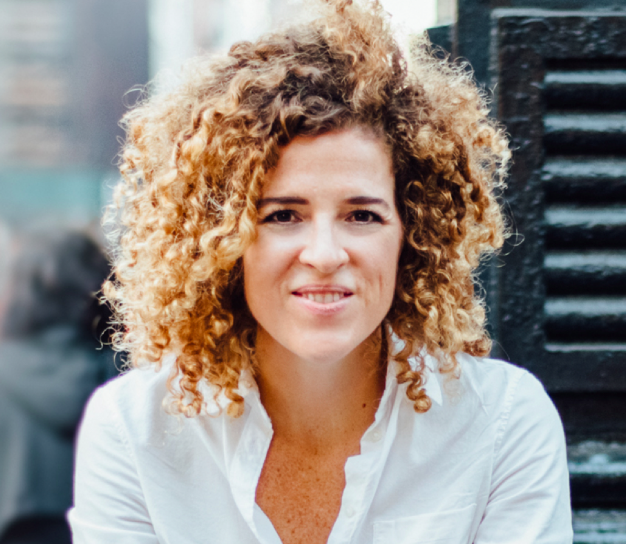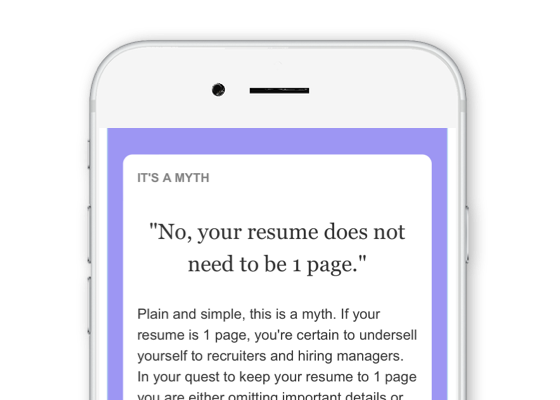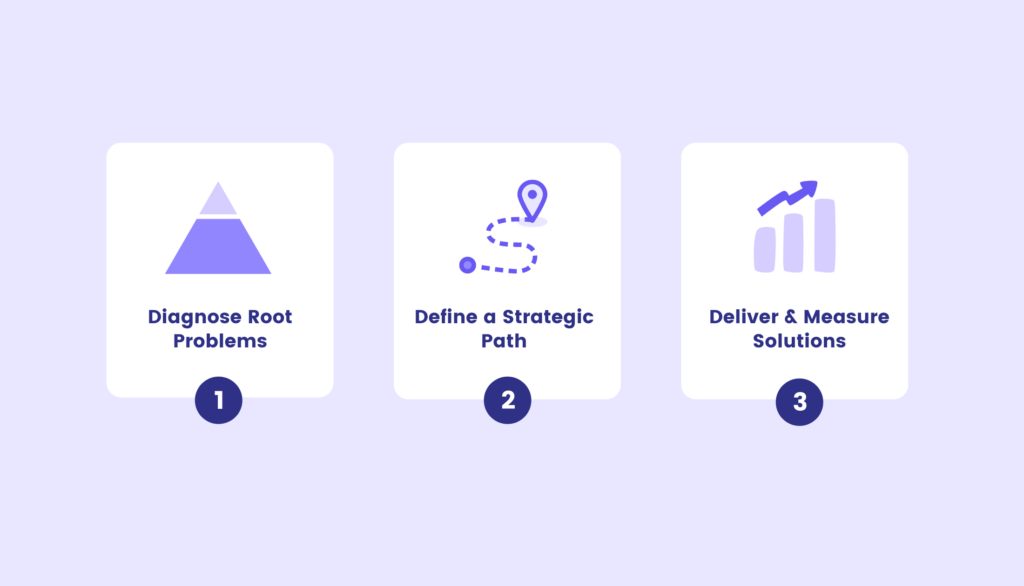13 min read
How to Develop Your Professional Network Throughout Your UX Career
13 min read
13 min read

Developing a professional UX network can be crucial to your career. It can lead to job opportunities, knowledge sharing, and life-long friendships. Networking does not have to feel like a dreaded activity or chore. You have the choice to redefine what networking means to you. An effective professional network is not about how many connections you have on LinkedIn, UX groups you belong to, or followers you have on Twitter … it’s about the quality of those relationships.
When I say “networking,” do you think, “My worst nightmare! Seriously, I find it exhausting, awkward, and sometimes slimy. It always feels forced and I don’t have time for it anyway!” Or, do you think, “Love it! The more the merrier. I love connecting with people. Small talk lights me up. I try to go to events or coffee dates each week.”
No matter which camp you fit into, I think we can agree that networking is crucial to your career, and it’s not specific to the UX industry. Developing a professional UX network creates both community and opportunity, which will be helpful at any stage of your career. Networking does not have to mean running around to events, coffee dates, and happy hours.
Let’s redefine what networking really means
Professional networking often feels inauthentic and transactional because people approach it with the mindset of, “What can I get from this person?”
Instead, focus on what you can give—not only what you can get. Consider shifting your focus from “building a network” to “nurturing relationships.”
The size of your network is a vanity metric. Instead, you should be focused on engagement and connection and ask yourself questions such as:
- How well do you know the people in your network?
- How many of them would respond to an email from you?
- What percentage of people would know who you are if you saw them at an event and went up and said hello?
4 reasons why you should always be networking
- Help you find and get jobs. If you’re looking for a job, people in your network might be able to send you job openings or let you know about opportunities even before they are posted. Once you’re in the interview process, your network can be helpful because maybe they work at the company you’re interviewing at or can put in a good word with someone they know there.
- Stay up-to-date about the industry. Don’t know much about voice user interfaces? Not sure about accessibility standards? Your UX network can help you keep a pulse on what’s happening and identify “go-to” people you can reach out to if you have questions about specific topics.
- Help you find mentors. As you expand your professional network, you’ll quickly identify people you want to learn from. Mentor relationships do not have to be formal, and your mentor doesn’t have to work in the same industry as you—they just have to be people who will answer your questions and give you helpful advice.
- Give you an audience/platform. In 2012, I quit my job without a plan, but I knew I would be fine because I was growing an audience: a following on Twitter (maybe 4,000 people at the time) and a small email list for my UX newsletter, The UX Notebook. I let my audience know I was available for project and contract work—and my calendar filled up stat. I believe it worked because these people were familiar with me, heard from me regularly, and already trusted me.
Moving from building a network to nurturing relationships
So if the goal is to always seek to be a giver first, how can you approach networking or relationship-building activities?
Here are three goals that you should have in mind when you are at an event or when you meet someone new, whether it’s in-person or online.
- “How can I serve this person?” Make the conscious decision to truly listen and get to know that person’s needs, situation, challenges, and interests.
- “What can I learn from this person?” Find out what areas of expertise this person has and if they have experience that relates to your situation right now. For example, have they recently gotten a new job or learned a new specialty?
- “What can I teach this person?” Seek to identify what knowledge you have that this person could benefit from. Make a mental note of questions or topics they bring up so you can perhaps send them articles or ideas later.
Stop going to awkward networking events and do this instead
Don’t have time to go to industry meetups every evening? Does meeting people in person give you social anxiety? No problem—there are plenty of ways to connect with people online, and they offer a lot of benefits.
- Online groups: There are tons of online groups and communities you can join such as Designer Hangout and UX Design Community on Slack, or the UX Design Group on LinkedIn.
- Micro-communities. Big online groups and channels can be overwhelming, so I recommend that you consider finding micro-communities that are more specific to your needs and interests. For example, if you are interested in user research, consider joining Mixed Methods, a Slack community focused on research. Or if you’re working on your UX portfolio or preparing for UX job interviews, then come to my community The UX Portfolios & Careers Group. These micro-communities offer a dedicated space to have deeper conversations on specific topics, which helps you stay focused and avoid being pulled into distracting discussions.
When it comes to making a good first impression, whether in person or online, it helps to have a plan. Here’s what you should consider when you meet someone new or join a community:
- Write a clear introduction for yourself. “I’m a UX designer, nice to meet you.” is boring. Take the time to develop an elevator pitch for yourself. What specifically do you do in UX? Are you passionate about certain topics, such as accessibility or mobile? Finally, share a glimpse of who you are as a person. Oftentimes when I meet people, I let them know that I’m Canadian. It’s a fun fact that will help people remember me later.
- 80% listening, 20% talking. Ask smart questions and let the other person do the majority of the talking. Put your user research skills to use and practice listening. Remember, seek to serve. You can do this by providing thoughtful answers to questions or offering encouragement or advice. In the Tech Ladies group on Facebook, for example, when you post a question—or as they call it, an #ask—you’re also encouraged to include an #offer. This helps encourage the spirit of reciprocity in the group.
- Do your homework. If you know you’re going to meet someone, then it pays to do some research about them in advance. Let’s say you are going to a conference and you really want to try and connect with a specific person. Take a few minutes to check out their LinkedIn or Google them to see if they have any articles or a website. Gather a bit of intel so you can have some talking points. For example, if you want to learn about voice user interfaces and you notice they wrote two articles about that topic and worked on Alexa at Microsoft, then go read those articles and come up with a few questions you want to ask.
Pro-tip … it can also be very helpful to have a system in place to organize your contacts. This could be as simple as a Google Sheet where you keep track of people’s names, email addresses, and perhaps things like topics they are interested in or a reminder of how you met. This is something I wish I had done a long time ago!
The quality of your UX network is not about size
I’ll say it again: don’t focus on the number of people in your network. Instead, consciously aim to develop deep relationships with a manageable number of people.
A good tactic is to make a list each quarter of six people you want to deepen relationships with, and an action plan on how you will nurture those relationships. Here are a few ideas that could be on your plan:
- Have two one-on-one meetings, whether in person or remotely. If you don’t know the person very well make sure you have a specific topic to discuss—as opposed to just “picking their brain.”
- Engage with them on social media bi-weekly. Use your best judgment here—a simple like or comment will do. Speaking from personal experience, when people send me private messages on every platform, it only decreases the chance I’m going to engage.
- Once a month, send a thoughtful email. Be smart about this—don’t send a 2,000-word message. For example, maybe a tweet of theirs got you thinking. Mention that tweet and share a few of your thoughts. Or, maybe you stumbled across an article they might find interesting and wanted to share.
One important thing to remember: don’t expect that each of these relationships will be reciprocal. For example, if I’m on your list, then, first of all, I’m flattered—but, realistically, I probably can’t have coffee with you a few times a quarter. That doesn’t mean you can’t learn from me, though!
When I was first starting out in UX, I had plenty of people on my “list” who didn’t even know it! I committed to learning from these people through activities such as:
- Subscribing to their newsletter and occasionally actually replying to it. As it turns out, sometimes people will actually reply!
- Leaving a thoughtful reply if they write an article, publish a video, or other pieces of content.
- Noticing what topics or questions they might have (remember, you seek to serve first) and then send them a relevant article when appropriate.
5 ways to grow your UX network throughout your career
Step 1: Audit your existing community involvement and relationships
Do a quick inventory of all the communities you’re active in and ask yourself if it’s a good use of your time. Communities are like water-coolers, sometimes there’s great discussion and other times, it does not add value to your career or life.
If you hang out on Twitter, what’s the ROI of that? Belong to a UX community on Slack? Is that adding value or causing colossal distraction? Do you find the more time you spend in some communities, the more you fall into the trap of comparing yourself to others and doubting your skills?
Make a list of all the UX groups and communities you’re involved in and honestly evaluate whether or not they are serving you well.
Step 2: Match your career goals to the communities you’re involved in
Before you ever spend time at a UX event or log in to a UX community or group as yourself, “does this group align with my career goals?”
Many groups are simply a distraction. Why? Because they have too broad of a focus. At times in your career it may be beneficial to be in group or community that hops around from topic to topic. However, it can also be very distracting.
Consider your career goals and identify what you need in your career right now. If you want to learn more about user research, don’t hang out in a general “UX / UI” group on Facebook. Instead, go find a group focused on user research.
This will help you focus on building your network around specific topics and reduce the risk of you feeling overwhelmed and tempted to go learn the hottest new software or jump into UX terminology debates .
Step 3: Commit to a group for a specific amount of time
You’ll develop more quality relationships if you become a regular in a group. You can’t do that if you show up randomly! People will forget you and you won’t develop meaningful connections.
Commit to a few groups and be an active participant. I recommend that you commit for 6 months and then re-evaluate after that. If it’s working, stay involved. If not, identify your goals and needs and find a group that works for you.
Make sure that each group maps back to your career goals! For example, if you’re a user researcher and you feel isolated in your role, perhaps you want to connect with more researchers. Or maybe you want to discuss topics related to being a woman in tech.
Step 4: Focus on a handful of individuals and nurture your relationship with them
You can’t develop quality professional connections if you don’t invest in the relationship. As with any relationship, it requires time and commitment.
Identify 3 – 5 people that you want to strengthen your relationship with over the next 6 months and follow the steps from this article to intentionally make it happen.
If it helps, create a mini project plan or reminders to check in with these people periodically.
Step 5: Keep your contacts and connections organized
Create a system to organize and document your contacts. Don’t let those connections get lost in a sea of messages on LinkedIn, Twitter, Slack, Facebook Groups, etc.
Develop a method that works for you so you can centralize notes about each person and then refer back to them later.
You’ve probably attended an event or conference and meant to follow up with someone, but never did. By having a centralized place and system to organize your contacts, you’re more likely to actually follow up and more importantly, remember key details about them.
Professional networking doesn’t have to feel like a chore or dreaded activity.
You have the choice to redefine what networking means to you. After you identify what networking activities feel most natural to you, prioritize those activities and focus on quality over quantity. It won’t happen overnight, but with time, you’ll develop a strong community of people that you can learn from and lean on throughout your career.









